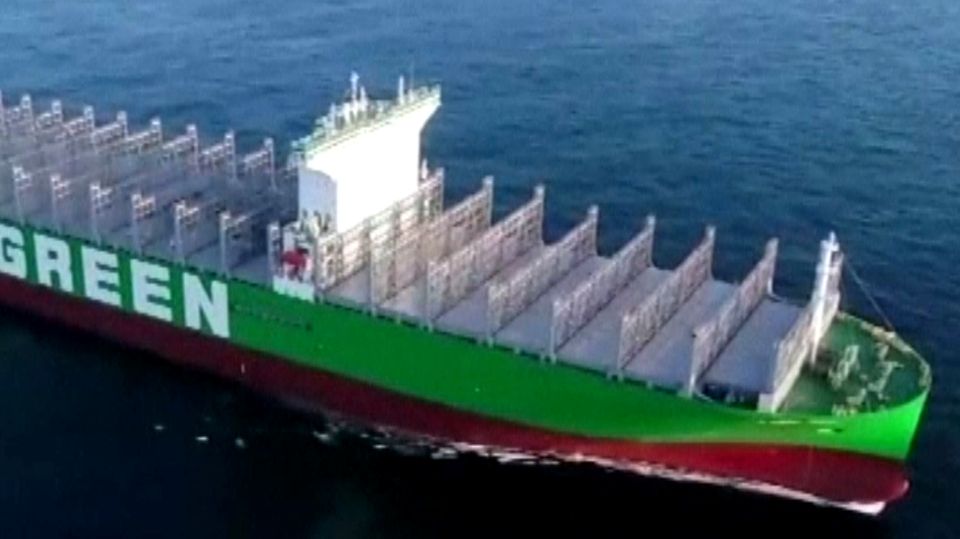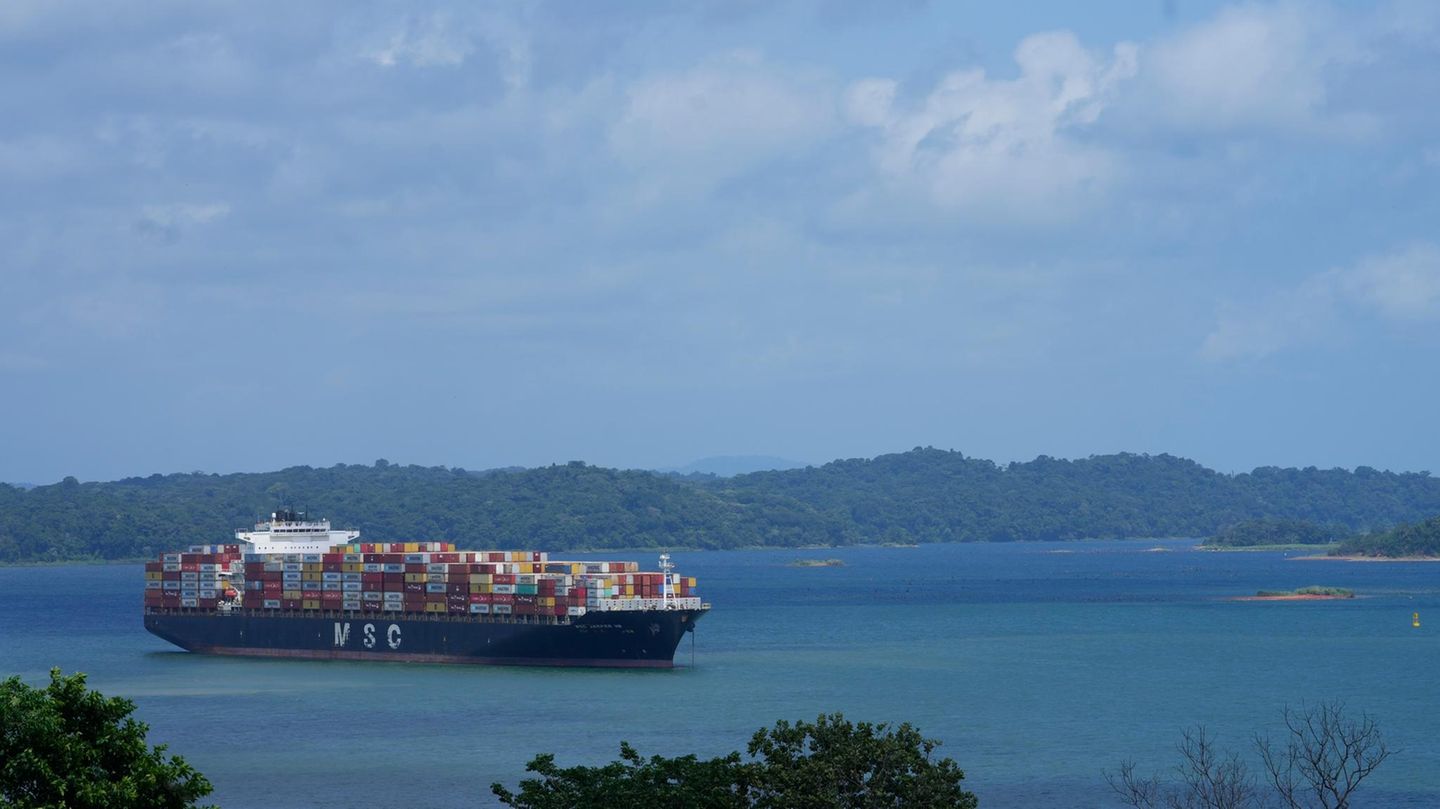The Panama Canal, which is so important for world trade, has a problem: persistent drought and high sea temperatures are causing container ships to get stuck in traffic. Experts fear that this will happen more often in the future.
It is only around 80 kilometers long – and yet of outstanding importance for the economy and world trade: the Panama Canal, which connects the Atlantic with the Pacific. Between 13,000 and 14,000 ships pass through it every year.
But the important waterway is struggling with ongoing problems that are causing the huge container ships to back up in the bottleneck of world trade. They have to wait days or even weeks for their passage. Maps from ship trackers such as show ships queuing at both ends of the canal. After waiting currently more than 120 ships.
The cause of the complications is a long-lasting drought and the associated lack of water in the canal. The natural El Niño climate pattern, which coincides with above-average warming of the waters in the central and eastern tropical Pacific, is contributing to Panama’s drought, the reported Monday.
Panama Canal Authority takes action
Data from the Channel Authority and the Smithsonian Tropical Research Institute (STRI) shows the Channel region is experiencing one of the two driest years on record, according to Reuters. The measured amounts of precipitation in the region would be 30 to 50 percent below normal.
Gatun Lake, a main rain-fed reservoir through which ships are channeled through the Panama Canal lock system, is also below normal water levels.
The Panama Canal Authority has taken several measures to continue allowing transit through the canal. So the draft was set at 44 feet (just over 13 meters). This also reduces the maximum weight of the ships.
Ship owners are now faced with the choice of either transporting fewer goods, choosing a different route (and thus accepting significantly longer journeys) or simply waiting. According to Reuters, some ships were delayed by up to 21 days.
According to the news agency, one container ship, the Ever Max, had to offload hundreds of containers to reduce weight.
situation seems to be easing
In addition, the authority has changed the reservation conditions for the canal passage. The number of slots is currently limited to 14. It’s usually 23. “This allows us to manage congestion and ensure that vessels that are en route or queued and have not received a reservation can still pass in a competitive time frame,” the statement reads distributed on Tuesday. This measure, which was limited until August 21, has been extended and only applies to shipping companies that do not yet have a transit reservation.
fight against plastic
Garbage mountains, dirty rivers and “rats in the church” – can Panama still be saved?
The situation now seems to be relaxing, as reported on Tuesday. The congestion eased after the Waterways Authority allowed more ships through without reservations and other ships chose alternative routes. Nevertheless, only 32 instead of 36 ships per day are allowed to pass through the intra-oceanic connection.
Despite the ongoing problems, she also pointed out that there had been queues of ships in the past. Climate fluctuations, fog, maintenance failures and the high season are “the usual causes” for waiting times. High demand also increases waiting times.
El Niño contributes to problems at the Panama Canal
But climate and shipping experts fear such events could become the new normal as rainfall deficits in the world’s fifth wettest country put climate risks to the fore for the shipping industry, which handles 80 percent of world trade.
A possible early onset of Panama’s dry season and higher-than-average temperatures typical of major El Niño events in the country could increase Gatun Lake’s evaporation and lead to record-low water levels by March or April 2024, he said STRI’s Steven Paton to Reuters. “It’s the perfect coincidence of events.”

In the last 25 years of the canal’s 109-year history, the frequency of major El Niño droughts has increased significantly. If this continues, “it will become increasingly difficult for the Panama Canal to guarantee the passage of the largest ships,” Paton continued.
Climate change affects world trade
Shipping managers expect further restrictions this year as canal operators have had to reduce crossings to 27 per day in 2020 due to a less severe drought.
“Anyone shipping product around the globe should be aware of possible disruptions from climate change,” Brian Bourke, global chief commercial officer at SEKO Logistics, told the news agency. “The Panama Canal is just the latest example.”
She also sees climate change as a threat to the economy and trade worldwide. “Higher temperatures, rising sea levels and more frequent extreme weather events mean lost productivity, production shortages, damaged transport infrastructure and supply disruptions.”
At the Panama Canal: In the rainy months from May to December, water is to be saved. So you want to support the water recovery in the surrounding lakes. Long-term solutions are also being sought together with the United States Corps of Engineers.
Sources: , , , , ,
Source: Stern




